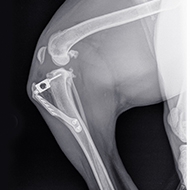TB plans described as "sensible approach" by BVA
The announcement of an "edge area" strategy to help stop bovine tuberculosis (bTB) spreading has been welcomed by the British Veterinary Association (BVA).
Low-risk areas for bTB in the UK, which sit beside high incidence areas, are set to have special measures put in place for heightened protection.
The measures announced by the Department for Environment, Food and Rural Affairs (Defra) will include increased levels of TB testing in cattle and targeted use of badger vaccination.
At present, the edge areas surround many of the south and westerly counties of the UK and include parts of Hampshire, Cheshire, Oxfordshire and East Sussex.
"Targeting specific measures at the edge area surrounding the high incidence areas is a sensible approach if we are to stop the advancing spread of this disease further north and eastwards," commented Peter Jones, president of the BVA.
"The edge area strategy recognises the role of both cattle movements and wildlife in the spread of bTB, and the need for extra effort to understand the dynamics of infection in cattle, in badgers, and between the two species."
Both the BVA and the British Cattle Veterinary Association (BCVA) are currently gathering views from members in order to respond to Defra's TB strategy for England.






 Birmingham Dogs Home has issued an urgent winter appeal as it faces more challenges over the Christmas period.
Birmingham Dogs Home has issued an urgent winter appeal as it faces more challenges over the Christmas period.
